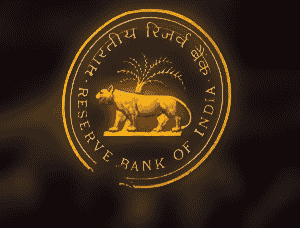The RBI is anticipated to decrease the repo rate, which represents its lending rate to commercial banks, indicating a shift in its monetary policy stance

The Reserve Bank of India (RBI) is anticipated to cut interest rates for the first time in nearly five years, a move aimed at stimulating economic growth amid rising inflation concerns. This potential decision reflects a shift in monetary policy as the RBI navigates the complexities of post-pandemic recovery and global economic pressures. Analysts and market participants are closely monitoring the situation, as the implications of such a rate cut could significantly impact borrowing costs and consumer spending.
1. Interest Rate Cut Anticipation
The RBI’s potential decision to lower interest rates marks a significant moment in Indian monetary policy. The last rate cut occurred nearly five years ago, and the current environment is characterized by a need for economic stimulus. Lowering the repo rate could encourage banks to reduce lending rates, making loans more affordable for consumers and businesses alike. This move is seen as a necessary step to invigorate spending and investment, which are crucial for economic recovery.
2. Economic Context
The Indian economy has faced numerous challenges in the wake of the COVID-19 pandemic. While there have been signs of recovery, growth remains tepid. The RBI’s decision to consider a rate cut reflects its acknowledgment of these challenges. Economic indicators suggest that consumer demand has not fully rebounded, and businesses are hesitant to invest without more robust demand signals. The RBI’s role in this context is to provide a conducive environment for growth through monetary policy adjustments.
3. Market Reactions
Financial markets have reacted positively to the prospect of an interest rate cut. Investors are hopeful that lower borrowing costs will stimulate economic activity. Stock markets often respond favorably to such news, as lower interest rates can boost corporate profits and consumer spending. Additionally, the real estate sector, which is sensitive to interest rates, could see a revival if borrowing becomes cheaper. This anticipation of increased liquidity and spending creates a ripple effect across various sectors of the economy.
4. Inflation Dynamics
Despite the push for lower interest rates, the RBI faces a delicate balancing act concerning inflation. Rising prices can erode consumer purchasing power and stifle economic growth. The RBI has a dual mandate to foster economic growth while maintaining price stability. As inflation remains a concern, the central bank must carefully assess whether a rate cut could exacerbate inflationary pressures or if it could be managed effectively. The RBI’s inflation targeting framework will play a crucial role in guiding its decisions moving forward.
5. Future Outlook
Looking ahead, the impact of a potential interest rate cut will depend on various external and internal factors. Global economic conditions, including commodity prices and geopolitical tensions, can influence inflation and growth in India. Additionally, domestic demand will be critical in determining the success of monetary policy adjustments. Analysts suggest that while a rate cut could provide short-term relief, sustainable growth will require structural reforms and increased consumer confidence.
Important Details & Evidence
- Historical Context: The last interest rate cut by the RBI was in 2018, marking a significant gap in monetary easing. This context is essential for understanding the current economic climate and the urgency of the RBI’s potential actions.
- Inflation Rates: Recent data indicates that inflation has been hovering above the RBI’s target range, complicating the decision-making process. The RBI’s mandate emphasizes the importance of managing inflation while fostering growth.
- Consumer Spending Trends: Surveys and reports indicate that consumer confidence remains fragile, with many households cautious about spending. This hesitation highlights the need for effective monetary policy to stimulate demand.
- Global Economic Indicators: The RBI is also influenced by global economic trends, including interest rate movements in other countries, which can affect capital flows and exchange rates.
Final Takeaways
The anticipated interest rate cut by the RBI signifies a pivotal moment for India’s economic policy, reflecting the challenges of post-pandemic recovery and the need for increased consumer and business confidence. While the potential for lower borrowing costs could stimulate economic activity, the central bank must navigate the complexities of inflation management and global economic pressures. The effectiveness of this monetary policy shift will depend on a multitude of factors, including consumer behavior and external economic conditions. As the RBI prepares for this critical decision, stakeholders across the economy will be watching closely, eager to understand the implications for growth and stability in the coming months.